Vivid Audio KAYA 90 Loudspeakers by Bill Wells
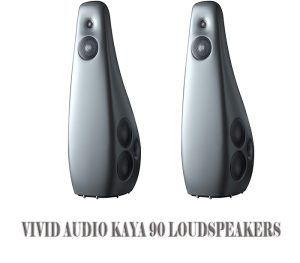
 Dropping in at the GTT Audio exhibit during the April 2023 AXONA North America Show, I had an opportunity to visit with both Dick Diamond and Bill Parish. In their main listening room, they showcased the top-of-the-line Vivid Audio GIYA G1 Spirit loudspeakers and a pair of Vivid Audio’s smaller Kaya 25 speakers in an adjacent listening room. In anticipation of visiting this room and various other exhibits, I had a list of favorite recordings that I hoped to be able to listen to during this visit. Having this list is one of the benefits of streaming via Tidal or Qobuz during these shows. Over the years – I’ve done this primarily to get a general idea of how any given system sounds with music that I am most familiar with vs. totally unknown music.
Dropping in at the GTT Audio exhibit during the April 2023 AXONA North America Show, I had an opportunity to visit with both Dick Diamond and Bill Parish. In their main listening room, they showcased the top-of-the-line Vivid Audio GIYA G1 Spirit loudspeakers and a pair of Vivid Audio’s smaller Kaya 25 speakers in an adjacent listening room. In anticipation of visiting this room and various other exhibits, I had a list of favorite recordings that I hoped to be able to listen to during this visit. Having this list is one of the benefits of streaming via Tidal or Qobuz during these shows. Over the years – I’ve done this primarily to get a general idea of how any given system sounds with music that I am most familiar with vs. totally unknown music.
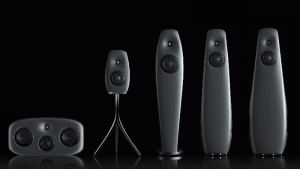
After quick hellos and warm greetings, our conversation quickly focused on the speakers in their exhibit. Despite having heard positive feedback regarding the Vivid Audio line, I was also unfamiliar with them until this visit. And yes, while the larger loudspeakers caught my eye (and my ears), I was also impressed and became interested in learning more about the smaller models. I quickly learned that this particular speaker was a part of Vivid Audio’s Kaya series. Both from a cost, size, and design perspective, the speakers in this line were interesting. After much listening and discussion, we focused on considering a top-of-the-line Kaya 90 speaker for possible review (retail $28,000). As things turned out – a dealer located near me had a pair of these speakers and was agreeable to provide them for this review. Arrangements were made within a month or so following the show, and the Kaya 90 speakers were delivered to my home.
Initial Installation & Set-up

Due to the speakers having side-firing woofers, careful consideration was made to ensure that bass performance would not be negatively impacted. Additionally, the speakers were placed approximately 9 feet apart from center to center. Beyond that, the distance from the front of the speaker to my preferred listening position was approximately 12 feet. As such – the toe-in was adjusted to maximize the speaker’s dispersion pattern. Initial listening confirmed that this placement worked quite well, and there was no need for further adjustment until later and after I became acclimated to their sound and overall performance in my listening space. It should be noted that each speaker has six spikes, with the speakers placed on top of a thick carpet, including a pad and concrete floor underneath. Beyond that – my primary listening space has been treated modestly with various devices that help minimize speaker placement’s impact and enhance overall room acoustics.
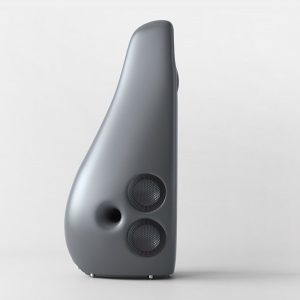
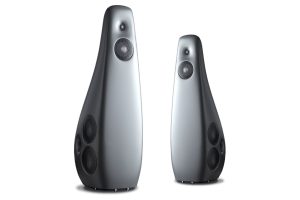
Physical Appearance, Cosmetics and Aesthetics
 Unlike the Giya series speakers in the Vivia Audio line with their noticeably distinct design, the Kaya series has a different appearance. This design is mainly due to the absence of external tubes on top of the Giya speakers. According to the Vivid Audio literature – the curved bass absorber horn of the GIYA series is folded back on itself and fits neatly inside the Kaya 90 speaker cabinet. This design allows the DNA of the GIYA series to stay intact. As stated in the literature – this design is done for specific engineering reasons, including the absorption of resonances and coloration. Importantly, with this approach – the overall performance is not compromised. The literature also states that the Kaya 90 is named due to its internal volume of 90 liters. This is combined with four reaction-cancelling drivers (i.e., woofers) and patented Tapered Tube loading designed to tighten and clarify the bass articulation of the KAYA 90, which I shall comment on later in this review.
Unlike the Giya series speakers in the Vivia Audio line with their noticeably distinct design, the Kaya series has a different appearance. This design is mainly due to the absence of external tubes on top of the Giya speakers. According to the Vivid Audio literature – the curved bass absorber horn of the GIYA series is folded back on itself and fits neatly inside the Kaya 90 speaker cabinet. This design allows the DNA of the GIYA series to stay intact. As stated in the literature – this design is done for specific engineering reasons, including the absorption of resonances and coloration. Importantly, with this approach – the overall performance is not compromised. The literature also states that the Kaya 90 is named due to its internal volume of 90 liters. This is combined with four reaction-cancelling drivers (i.e., woofers) and patented Tapered Tube loading designed to tighten and clarify the bass articulation of the KAYA 90, which I shall comment on later in this review.
Appearance-wise, the curved bass absorber horn creates a distinctive appearance, with the lower back side of the speaker proportionately larger. The review pair at my home came in a soft, subtle gray color that blended very nicely with my room décor and overall color scheme. (Check the manufacturer’s website for availability of additional color choices).
Additionally, looking directly head-on – the speakers are fairly narrow and have a sleek contour overall. When looking at the speaker’s side, you see how the woofers are placed. Overall – the look is modernistic and artistic, unlike any other loudspeakers I’ve seen.
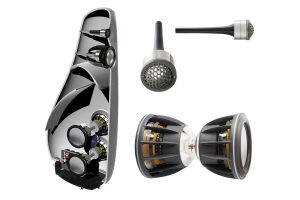
Regarding speaker specifications for the Kaya 90s, they are listed as a 3-way, 6-driver speaker with the following drive units: 1.02-inch dome tweeter, 3.9-inch alloy cone midrange, and four 4.9-inch alloy cone woofers. All drivers feature tapered tube loading, plus the bass loading features an exponentially tapered tube-enhanced bass reflex design. The cabinet material is a glass-reinforced sonic-cored sandwich composite. Cabinet colors include Piano Black, Pearl, and Oyster Matte, and optional colors on request. Sensitivity is rated at 90 dB with a nominal impedance of 6 Ohms. The frequency range is 35HZ – 25KHZ (-6dB). Recommended power is 25W to 500W. Speaker dimensions are 47” H, 14.5” W, and 21” D. Weight is 84 pounds.
Getting to the Sound – Listening, Observing, Assessing and Evaluating
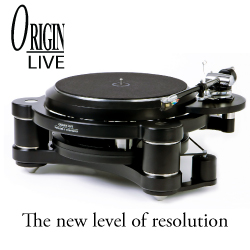 Once the Kaya 90s had been in place for a reasonable period, including being properly dialed in and experimenting with various cables, it became readily apparent that the Kaya 90s could reveal differences between placement, cables, and other minor adjustments. Importantly, inserting the Townsend Audio Seismic Platforms under the speakers noticeably enhanced the sound with enhanced resonance control. Specifically, the degree of clarity, transparency, openness, neutrality, and bass performance improved with these devices in place.
Once the Kaya 90s had been in place for a reasonable period, including being properly dialed in and experimenting with various cables, it became readily apparent that the Kaya 90s could reveal differences between placement, cables, and other minor adjustments. Importantly, inserting the Townsend Audio Seismic Platforms under the speakers noticeably enhanced the sound with enhanced resonance control. Specifically, the degree of clarity, transparency, openness, neutrality, and bass performance improved with these devices in place.
Cutting to the chase, these speakers have a noticeable truth to the source character and speak musical truth. For my initial listening notes, here’s what I captured regarding the overall sonic character of the Kaya 90s:
· Very clean, clear, open, transparent, highly resolving with outstanding inner detail;
· Excellent imaging with superb lateral spread and very good depth;
· Bass/mid-bass is very solid, dynamic, taunt, controlled, and with no overhang, as well as being nicely detailed and articulate;
· Midrange is wide open, organic, superbly textured, and with outstanding layering and excellent depth;
· Musical sounds emerge from a very quiet, see-through (and into) soundstage;
· Higher frequencies are extended, open, airy, and with excellent articulation;
· Transient speed is quick and very natural;
· Speakers are efficient and do not require playing loud to get really good results;
· Coherency between drivers is seamless to the point that mid and high frequencies emerge as a singular source.
During an afternoon of hosting a group of friends (i.e., astute audiophiles as well as critical music lovers) for a critical listening session, we listened to a wide variety of music, including acoustic jazz, both classic and contemporary, male and female vocals, as well as the full gamut of instruments. The music also covered varying styles and arrangements ranging from duets, trios, quartets, and quintets to recordings with full orchestral backgrounds.
The constant feedback throughout the afternoon was often around how the Kaya 90s sounded true to the source and how lifelike and authentic voices and instruments were portrayed. There was no sense of embellishment, hype, or favoring of any specific range throughout the entire frequency spectrum. The tonal balance was spot on with all the different types of music played and different recording techniques. Interestingly, despite the varying quality of the recordings listened to, the Kaya 90s continued to communicate in a very authentic musical manner that achieved excellence.
First up was 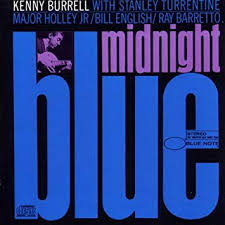 Kenny Burrell’s classic jazz recording titled Midnight Blue (Tidal/MQA). The selection titled Chitlins Con Carne revealed a wonderful lateral spread with lots of left/right channel separation, including an open and clear sound stage and a naturalness to the musical reproduction. Burrell’s guitar had excellent tonality, being very natural with excellent nuance. Additionally, saxophone master Stanley Turrentine’s classic signature sound came through in a very stylistic and expressive way. Next up was Freddie Hubbard’s excellent recording titled First Light (CTI label, Tidal). The classic tune titled Moment to Moment has a wonderfully wide, open soundstage with a beautiful orchestral background arrangement. The Kaya 90s allowed the music to flow dynamically and realistically. Also, in this particular recording, the speakers easily reveal many intricate musical nuggets and nuances.
Kenny Burrell’s classic jazz recording titled Midnight Blue (Tidal/MQA). The selection titled Chitlins Con Carne revealed a wonderful lateral spread with lots of left/right channel separation, including an open and clear sound stage and a naturalness to the musical reproduction. Burrell’s guitar had excellent tonality, being very natural with excellent nuance. Additionally, saxophone master Stanley Turrentine’s classic signature sound came through in a very stylistic and expressive way. Next up was Freddie Hubbard’s excellent recording titled First Light (CTI label, Tidal). The classic tune titled Moment to Moment has a wonderfully wide, open soundstage with a beautiful orchestral background arrangement. The Kaya 90s allowed the music to flow dynamically and realistically. Also, in this particular recording, the speakers easily reveal many intricate musical nuggets and nuances.
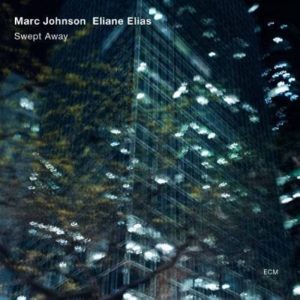 Shifting over to Brazilian pianist/vocalist Eliane Elias along with Marc Johnson on her recording titled Swept Away (Tidal, MQA) – both the beautiful interplay among the artists and the subtle Latin-styled rhythms are very well communicated through the Kaya 90s’. On both the title tune, Swept Away, and another beautiful selection, Foujita, the music flows with swirling, sensuous piano riffs and wonderful acoustic bass.
Shifting over to Brazilian pianist/vocalist Eliane Elias along with Marc Johnson on her recording titled Swept Away (Tidal, MQA) – both the beautiful interplay among the artists and the subtle Latin-styled rhythms are very well communicated through the Kaya 90s’. On both the title tune, Swept Away, and another beautiful selection, Foujita, the music flows with swirling, sensuous piano riffs and wonderful acoustic bass.
Another superb and engaging recording titled Someone To Watch Over Me (Tidal)features the renowned jazz vocalist Shirley Horn on both piano and vocals, accompanied by Toots Thielmanns on his sweet, intimate harmonica. On this particular recording – the sound through the Kaya 90s is quite intimate, tender, and with very expressive, emotive vocals. On top of this – Toot’s magical sound layering, including his unique legendary technique on the harmonica, is wonderfully revealed. Midway through this recording, Toots does a gorgeous solo that adds more spice to this recording. Again – the Kaya 90s reproduced this music with excellent color and captured the harmonic structure of each note that was sung or played through an instrument.
For contemporary R&B music, we listened to the singer, composer, and arranger known as Kem. On his album Love Always Wins (Tidal, MQA), the Kaya 90s produced a wonderful sense of presence that revealed his vocal style and mannerisms. The sound was neither forward nor bright – just with a magical quality of giving the listener a sense that the artist was in the room performing right before us. His voice and accompanying music accompaniment were expressive, clear, full, and engaging. In addition to Kem, we also checked out Mark Murphy on his recording titled Once to Every Heart (Tidal). The sound was once again intimate, lifelike, seductively engaging, and tonally pure, with the musical arrangement behind Murphy’s voice superbly rendered by the Kaya 90s.
Imaging and Sound staging
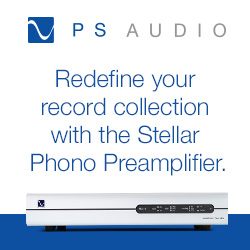 Without question – these speakers are masters at revealing the spatial qualities of the recording venue and accurately placing performers within the sound stage, further enhancing the realism of the performance. This sonic attribute certainly varies with the recording quality, and despite some older recordings being less than pristine, these speakers can provide a very realistic sound stage. Another strong point of these speakers is their ability to allow musical sounds to emerge from the sound stage with ease and freedom, which helps create an illusion. Beyond this, musical sounds and intricate sonic nuances are captured magically and holographically, including horizontal, vertical, and depth dimensions.
Without question – these speakers are masters at revealing the spatial qualities of the recording venue and accurately placing performers within the sound stage, further enhancing the realism of the performance. This sonic attribute certainly varies with the recording quality, and despite some older recordings being less than pristine, these speakers can provide a very realistic sound stage. Another strong point of these speakers is their ability to allow musical sounds to emerge from the sound stage with ease and freedom, which helps create an illusion. Beyond this, musical sounds and intricate sonic nuances are captured magically and holographically, including horizontal, vertical, and depth dimensions.
Transparency, Resolution, Neutrality, Dynamics & Frequency Spectrum Revealed
Transparency and resolution are other important attribute of the Kaya 90s. Fortunately, this becomes evident even while listening at moderate volume levels. Along with their superb open, transparent sonic character – there is a high degree of neutrality, with both instrumental and vocal sounds distinct, clear, and resolute. As a result – the Kaya 90s get out of the way, including an excellent disappearing act, and allow the music to emerge true to the source. Based on the overall design of these speakers, their high level of resonance control in the cabinet structure noticeably diminishes colorations. Along with the specialized type of construction for both the cabinet and driver units – the noise floor is lower, allowing the listener to hear subtle sounds more easily.
In the area of dynamics – the Kaya 90s sound lifelike, unrestricted, unrestrained, and bold when called upon to do so. They can also play with tender finesse and clearly maintain a sense of ease and composure. Along with excellent transient speed, attack, and decay, the music flows from these speakers and maintains a true sense of naturalness at the most reasonable listening levels. Crank up the volume; you get big, wonderful music without overhang or smearing. Dial it back a bit, and you won’t be disappointed. Additionally, these speakers are fairly efficient and relatively easy to drive, making them responsive to subtle changes in volume. Ahmad Jamal’s excellent recording titled Blue Moon provides lots of wonderfully dynamic piano and percussion, with the Kaya 90s clearly producing some of the best sounds from this recording I’ve experienced in my listening room.
 In terms of how these speakers cover the various musical spectrum such as bass, midrange, and the higher frequencies (i.e., treble region), I find that what these speakers provide is, on balance, one of the best overall presentations I’ve experienced. The bass is full, deep, and complete; the midrange is wonderfully organic, open, and clear; and the treble is extended, smooth, and clear. As a result – and after extensive listening, I haven’t found any areas that I would consider deficient, nor do I find myself wanting in any part of the musical spectrum with the Kaya 90s. That said, the depth of deep bass response if you only listen to acoustic bass accompaniment is deceiving. On well-recorded pieces with electric or electronic bass instruments, the depth to which these speakers plumb both in quality and volume supports the wisdom of the bass loading technique used in the speaker’s design. It is somewhat surprising how deep, clean, articulate, and compelling electronic bass reproduction these modestly sized speakers deliver.
In terms of how these speakers cover the various musical spectrum such as bass, midrange, and the higher frequencies (i.e., treble region), I find that what these speakers provide is, on balance, one of the best overall presentations I’ve experienced. The bass is full, deep, and complete; the midrange is wonderfully organic, open, and clear; and the treble is extended, smooth, and clear. As a result – and after extensive listening, I haven’t found any areas that I would consider deficient, nor do I find myself wanting in any part of the musical spectrum with the Kaya 90s. That said, the depth of deep bass response if you only listen to acoustic bass accompaniment is deceiving. On well-recorded pieces with electric or electronic bass instruments, the depth to which these speakers plumb both in quality and volume supports the wisdom of the bass loading technique used in the speaker’s design. It is somewhat surprising how deep, clean, articulate, and compelling electronic bass reproduction these modestly sized speakers deliver.
Throughout the time that I’ve spent with the Kaya 90 speakers, I have had many days and evenings of excellent listening sessions. Often with the intent to catch a couple of tunes – I then find myself unexpectedly settling in and dialing up additional recordings for continued listening. Interestingly, my wife often finds her way into the listening room and joins me with requests of her own.
Final Thoughts
Having lived with and enjoyed these outstanding speakers immensely – I can very confidently state that the Vivid Audio Kaya 90 speakers are highly musical, superbly refined, and, without question – one of the best-sounding pairs of speakers that I’ve had in my home over many decades of being involved in high-end audio. I would caution those accustomed to tipped overly expressed high-end responses to be assured that the honest and extended high-end response is not just there with these speakers but very likely more realistically presented than with what lesser neutral designs might provide. Beyond this – the Kay 90 speakers perform in a way that brings life to recorded music and provides delightful long-term listening. I believe this is what it’s all about, and the Vivid Audio Kaya 90 speakers are all about providing high-quality musical pleasure and satisfaction.


Specifications:
MANUFACTURER INFORMATION
Name: Vivid Audio
Co-Founders: Philip Guttentag / Laurence Dickey (Designer)
Address: Kaap Hoomdreef 60, 3563 AW Utrecht, The Netherlands
Tel: +31 6 267 767
Web Site: www.vividaudio.com
Email: ewald@vividaudio.com
US DISTRIBUTOR / IMPORTER:
Company: GTT Audio & Video — Bill Parish / Dick Diamond
Location: Long Valley, NJ 07853
Tel Number: 908-850-3092
COST: $28,000
Bill’s Associated Equipment
Amplification & Digital Playback System
· Bel Canto Design – Black System: ASC2 Asynchronous Stream Controller (line stage/rendered) and MPS1 Power Stream units (monoblock amplifiers w/internal DACs)
· Tidal and Qobuz – Hi Rez streaming services
Loudspeakers
· Kharma Elegance DB-7 Signature
· BCD Dynamic/Horn hybrid
Cabling
· AT&T Fiber optic interconnection link
· Cardas Clear Beyond XL – power and speaker cables
· Fidelium – ribbon speaker cables
· Synergistic Research – Atmosphere SX Euphoria power and speaker cables
Accessories
· Cardas Nautilus AC power strip w/Clear Beyond XL power cord
· Furtech NCF Nano AC receptacles
· Matrx Systems equipment rack
· Shakti Hallographs
· Synergistic Research – FEQ Frequency Equalizer, Black Box, HFTs, and cable lifters
· Townsend Audio Seismic Podiums and Isolation Pods
· Ultra Resolution Technologies – isolation base
Stereo Times Masthead
Publisher/Founder
Clement Perry
Editor
Dave Thomas
Senior Editors
Frank Alles, Mike Girardi, John Hoffman, Russell Lichter, Terry London, Moreno Mitchell, Paul Szabady, Bill Wells, Mike Wright, Stephen Yan, and Rob Dockery
Current Contributors
David Abramson, Tim Barrall, Dave Allison, Ron Cook, Lewis Dardick, Dan Secula, Don Shaulis, Greg Simmons, Eric Teh, Greg Voth, Richard Willie, Ed Van Winkle, and Rob Dockery
Music Reviewers:
Carlos Sanchez, John Jonczyk, John Sprung and Russell Lichter
Site Management Clement Perry
Ad Designer: Martin Perry


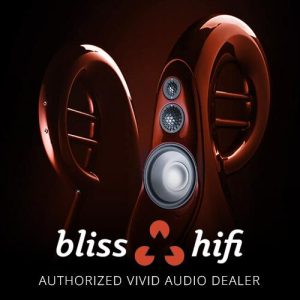

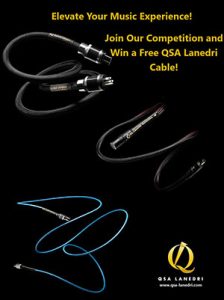



Be the first to comment on: Vivid Audio KAYA 90 Loudspeakers by Bill Wells